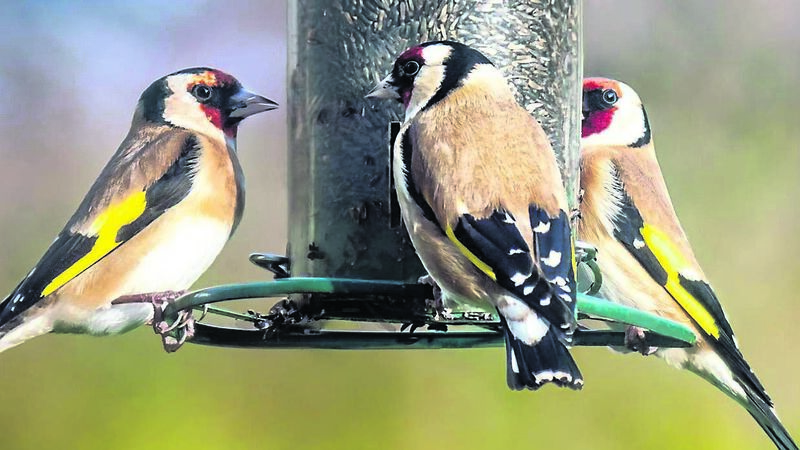Got the winter blues? A simple bird feeder lifted my spirits...

Bird feeders will attract many birds to the garden and help to sustain them over the winter.
Books are written and read about them, fish-tanks are purchased, podcasts are played, medication is prescribed, counselling is sought, calming music is listened to, running shoes are run ragged.
Alcohol is drunk. Binge-eating happens. Drugs are smoked, snorted, injected.
And in the face of all of that, the first two months of the year are particularly rough going. January’s awful, but it’s over.
But February, now; February’s one to watch. It’s endless, the weather’s often bad, there’s nothing yet either to look at or look forward to, we mainly just put our heads down and trudge through it and hope to see a few early daffodils and snowdrops if we keep our eyes open.
One Saturday I plodded around the garden looking at the mess. It was dead and wet and depressing. There were empty, neglected bird-feeders in the trees. These hung a few yards from the window of a room that I used frequently at one time, and all sorts of tiny birds would come. Sometimes, a fox would stroll out on his rounds or rabbits would hop through the grass.
I was busy; I didn’t have the time to sit there and watch the goings-on, but when I did take a breath and look out, it never failed to lift my heart.
I don’t use this room much during the day any more. Covid knocked over the apple cart, and since recovering, my work takes me elsewhere.
The study found that people living in places with more birds, shrubs and trees are less likely to suffer from depression, anxiety and stress.
Watching them keeps the mind calm and entertained, the science finds.
Some experts say that watching birds visiting your garden can even be a form of meditation, others that it provides moments of awe, which, research says, also makes us happier and healthier.
Well, let’s face it. This was a potential win, win particularly with February looming into view.
I moved the three old bird-feeders and one new one to another part of the garden, near windows at the side and back of the house. I hung two on trees near the window of a room we’re always in, and I put two more dangling from hangers at the corner of the house near another window.
It’s important to place bird-feeders away from bushes or walls where cats can hide and attack them, but at the same time you have to put them within a metre or two of a tree or hedge because common garden bird species dislike open spaces – they leave them vulnerable to attack.
That said, it’s not always easy to find the perfect spot, where the feeders are placed close enough to vegetation for your tiny visitors to feel safe, but also in view of your window – but I did my best.
On the advice of a friend who has hosts of tiny birds feeding on mixed corn around her house, I bought buckets of bird feed - I couldn’t find the mixed corn that she said they loved, but I bought peanuts and wild bird seed and, as advised, put out a wide container of water for the birds to drink from.
If the container seems a bit deep for the little ones, put a big stone in it for them to perch on, advised my friend, so I did.
And don’t forget the big birds, she said. Put food out for the crows and magpies on the ground. I did.
She also suggested halving an apple and putting each half on a tree with a branch sticking through it.
However, I was surprised to discover it’s not a good idea to give them bread or dessicated coconut as these may cause stomach problems.
It’s also a good idea to spread your feeders around different locations so the birds aren’t all coming together at one spot.
For a while, nothing much happened. The local birds were used to the feeders being in a different part of the garden. They had also, admittedly, become accustomed – given that I was ill with Covid and Long Covid for the best part of two years – to those feeders staying empty.
Initially, I thought the birds had either abandoned us altogether, or just couldn’t find the feeders.
But then, suddenly one Saturday there were blue tits and yellow tits and a robin at the feeders; magpies and crows feasted on the little heap of nuts and seeds on the ground and some other birds came; I think I saw a chaffinch and a blackbird.
They sort of queue up. They’re very polite. It’s great to watch. It does the heart good. Really.
Last, but not least, it’s important to fill the feeders at the same time every day because the birds can otherwise spend valuable winter foraging hours hanging around empty feeders waiting for them to be re-filled.
And keep the feeders clean – wash them out every two weeks with a little mild bleach – give them a good scrub, a thorough rinse and allow them to air dry completely before using them again.
Then wash your own hands well. Enjoy!







 App?
App?


